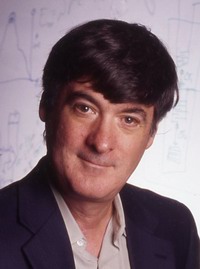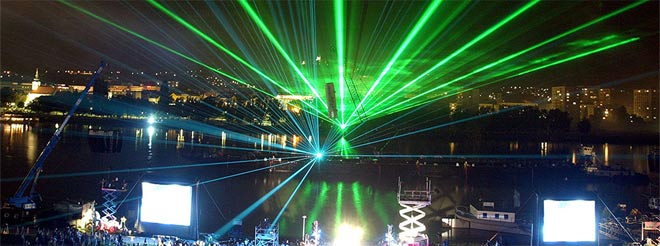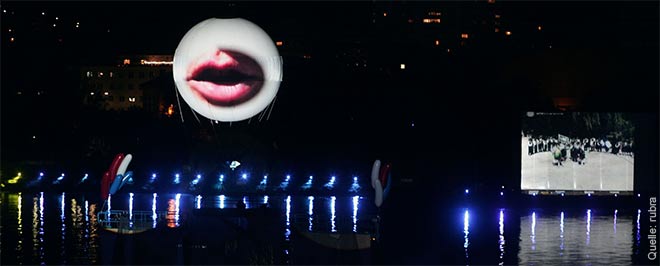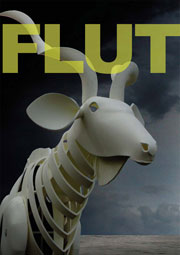Advance Program
Saturday September 5, 2009
The Open Ceremony begins at 9 am, afterwards the conference will be opened with the first Keynote. After this Session 1 with 3 papers and Session 2 with 4 papers are following. The afternoon will close with "One Minute Madness" at 4.30 pm and the Presentation of Posters at 5 pm. In the evening takes place a great social event within the framework of "30 years Ars Electronica Festival", the "Visualisierte Klangwolke".
| 08:00 - 18:00 | Registration |
| 08:30 - 09:45 | Opening Ceremony |
| 09:45 - 10:45 | Keynote (Joe Paradiso, MIT) |
| 10:45 - 11:15 | Coffee Break |
| 11:15 - 13:00 | Session 1 (Systems and Applications I) |
| 13:00 - 14:30 | Lunch |
| 14:30 - 16:00 | Session 2 (Smart Textiles) |
| 16:00 - 16:30 | Coffee Break |
| 16:30 - 17:00 | One Minute Madness |
| 17:00 - 18:30 | Posters |
| 20:00 - 22:00 | Klangwolke: The Flood |
Opening Ceremony (09:00 - 09:45)
This years co-chairs Alois Ferscha and Gerfried Stocker will start with a welcome speech and officially open the conference.
Keynote (09:45 - 10:45)
"A Decade of Exploration of
Diverse Applications in Wearable Sensing"

Abstract: Although Wearable Computing has somewhat entered the mainstream through ubiquitous mobile devices, the predictions put forward by the wearable research community since its inception of a distributed wearable architecture that co-perceives the user's local environment and responds appropriately through a variety of channels hasn't yet materialized. Low power systems and lightweight networking strategies point the way to this transition however, and research is exposing vivid realizations that show the potential in uniting networked wearable systems to pervasive responsive media scattered throughout the environment - interfacing humans to the ubiquitous electronic "nervous system" that sensor networks will soon extend across things, places, and people. This talk will overview work in happening in the MIT Media Lab's Responsive Environments Group that has explored aspects of this frontier, including "Cross Reality" systems (integration of ubiquitous sensor/actuator networks with heavily populated online virtual worlds), using wearables to control pervasively captured and interactive media, controlling building utilities through wearable systems, and diverse applications of wearable sensing in medicine and interactive music/media performance.
Brief Bio of the Presenter:
Joseph Paradiso is an Associate Professor of Media Arts and Sciences at the MIT Media Laboratory, where he directs the Responsive Environments group, which explores how sensor networks augment and mediate human experience, interaction, and perception. In addition, he co-directs the Things That Think Consortium, a group of industry sponsors and Media Lab researchers who explore the extreme fringe of embedded computation, communication, and sensing.
After two years developing precision drift chambers at the Lab for High Energy Physics at ETH in Zurich, he joined the Draper Laboratory, where his research encompassed spacecraft control systems, image processing algorithms, underwater sonar, and precision alignment sensors for large high-energy physics detectors. He joined the Media Lab in 1994, where his current research interests include embedded sensing systems and sensor networks, wearable and body sensor networks, energy harvesting and power management for embedded sensors, ubiquitous and pervasive computing, localization systems, passive and RFID sensor architectures, human-computer interfaces, and interactive media. He has authored 200 articles and technical reports on topics ranging from computer music to power scavenging.
After receiving a BS in electrical engineering and physics summa cum laude from Tufts University, Paradiso became a K.T. Compton fellow at the Lab for Nuclear Science at MIT, receiving his PhD in physics there for research conducted at CERN in Geneva.
Session 1: Systems and Applications I (11:15 - 13:00)
Session 2: Smart Textiles (14:30 - 16:00)
Posters (17:00 - 18:30)
Klangwolke: The Flood (20:00 - 22:00)


The Klangwolke ("cloud of sound") is an elaborate light and sound show.

Linz is flooded – the KLANGWOLKE 2009 is putting it into the fabric of one of humanity's oldest narratives. Floods of water, floods of information, human floods: different motifs stake out a very large area.
For quite some time it has now been impossible to overlook or to ignore the warnings. Does Linz, the city on the Danube, have to cleanse and purge itself? Prophecies are doing the rounds; some had better be taken seriously, others are patently absurd. During the day streams of wondrous figures pass through the city. In the shape of animals and creatures of fable they mix with the city's inhabitants. And in the evening, in front of the Brucknerhaus, Armageddon is played out, a dramatic confrontation between catastrophe and salvation. Then come the same questions that attend every great flood: who survives and at what price? One thing is certain: special effects will not be in short supply nor music nor the magic of light; this is what people have come to expect of a selfrespecting Cloud of Sound – and Linz can stay Linz for a long time to come, unharmed and open for the future.
The visualization will start at 9 pm in the Linzer "Donaupark" (500 m from the conference venue).
For more information see http://www.klangwolke.at/




